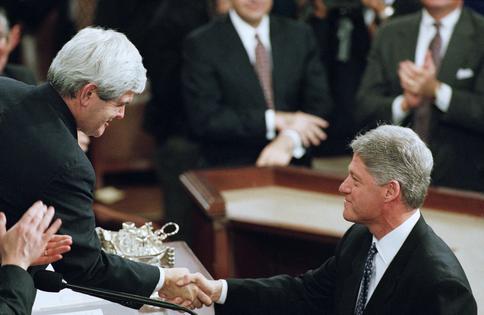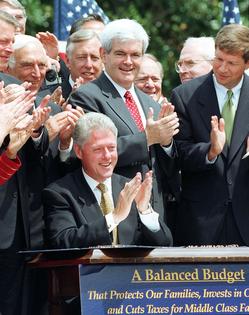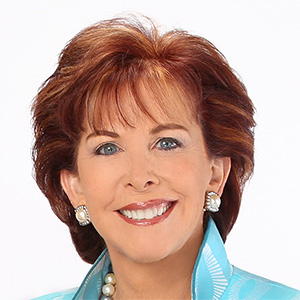I helped balance the federal budget in the 1990s – here's just how hard it will be for the GOP to achieve that same rare feat
Published in Business News
Kevin McCarthy reportedly promised many things to Republican hardliners en route to clinching his job as speaker of the U.S. House of Representatives. One of them was a “balanced budget” in 10 years.
As part of that plan, Republicans are demanding substantial spending cuts and budget reforms in exchange for lifting the debt ceiling this year – putting the U.S. at risk of default.
But a look at the numbers – and the history – shows just how difficult balancing the budget will be.
Doing so requires the federal government to generate enough income to pay for all its spending. The U.S. has managed this feat only twice in the past 60 years – and both times involved raising taxes, something Republicans are loath to do. President Lyndon B. Johnson managed to do it in 1969, and President Bill Clinton created a surplus that ran from the fiscal years 1998 to 2001, when he left office.
As a member of the Clinton administration in the Commerce Department from 1997 to 2001, I participated in achieving that rare balanced budget and understand the obstacles to delivering a repeat performance. A quick look back at how we did it, along with how much has changed, shows that Republicans are unlikely to manage a similar performance.
When Clinton took office in 1993, the budget deficit in the previous year was just under 5% of gross domestic product, and the nonpartisan Congressional Budget Office predicted a bleak fiscal outlook.
Clinton’s balanced-budget recipe was a mixture of higher revenues and lower spending, with help from a booming economy. In his second term, he also negotiated a bipartisan budget deal with Republicans.
After campaigning on a pledge to cut the deficit, Clinton raised taxes on the wealthy during his first year in office. He introduced higher top personal income tax brackets, raised corporate taxes, increased taxes on Social Security benefits, added 4.3 cents per gallon onto gas taxes and eliminated a number of itemized tax deductions. On the spending side, Clinton took advantage of the “peace dividend” that followed the collapse of the Soviet Union to reduce defense spending from 4.3% of GDP in 1993 to 2.9% by 2000.
These measures helped slash the overall deficit to 1.3% of GDP by the end of Clinton’s first term. That’s the smallest it had been in 22 years.
The higher taxes invited pushback from Republicans, who gained majorities in the House and Senate in 1995. Clinton wrangled continually with then-Republican Speaker Newt Gingrich, who forced a government shutdown that same year.
As part of budget negotiations, Congress eventually passed the Balanced Budget Act of 1997, which retained Clinton’s original tax increases but cut capital gains taxes and reduced spending on Medicare and Medicaid. Meanwhile, the economy, fueled by a tech boom, expanded rapidly during Clinton’s second term.
Higher tax rates on the wealthiest Americans, strong economic growth and continued restraint in government spending produced a budget surplus of US$69 billion in 1998. The surplus peaked in 2000 at $236 billion before falling to $128 billion in 2001. The surplus – which hasn’t been seen since – allowed the U.S. to pay down the national debt by over $450 billion.
The lesson for Republicans today is that if they are serious about balancing the budget, it will require some very unpalatable choices.
On the spending side, so-called entitlements – mandatory programs such as Social Security, Medicare and veterans benefits – now [account for almost two-thirds of the federal budget](https://www.cbpp.org/research/federal-budget/introduction-to-the-federal-budget-process#:~:text=Spending.,on%20debt%20(see%20chart), compared with less than half when Clinton took office. Funding for these programs is set by formula, making it difficult to change. And the population of Americans 65 or older has grown by 32% since 1993, increasing demand for entitlements.
Defense spending takes up another 14% of taxpayer dollars, greatly exceeding every other item in the so-called discretionary budget, which includes everything else from transportation and energy to airline traffic control and national parks.
The U.S. spends 8% of the budget simply paying interest on the national debt. This percentage hasn’t changed much, but the debt itself has soared from $4.5 trillion in 1993 to $31 trillion today mainly because of massive tax cuts during the Bush and Trump administrations, costly wars in Iraq and Afghanistan and vast public spending to address the 2008 financial crisis and the COVID-19 pandemic.
Now that historically low interest rates have come to an end, the U.S. will be forced to devote a bigger slice of the pie to paying interest.
The policy nonprofit Committee for a Responsible Federal Budget recently estimated that if spending on defense, veterans, Social Security and Medicare were off the table, Congress would need to reduce all other spending by 85% to get to an overall balance. In other words, simple arithmetic means it is not feasible to achieve anything close to a balanced budget without addressing military spending and entitlement programs.
Reducing military spending is always controversial – and many Republicans (as well as some Democrats) would resist such cuts – but especially so at a time when the U.S. is ramping up military aid to Ukraine and the Pentagon perceives a threat from China. It’s the very opposite of the Clinton-era peace dividend.
Cutting mandatory spending would require significant reforms. The U.S. has one of the youngest minimum retirement thresholds in the world, at age 62, compared with 65 in Canada and 67 in Britain and Germany. Even France may soon have a higher minimum retirement age of 64 – though the current protests there over increasing it from 62 illustrate the political perils of such a change.
Certainly, opportunities do exist to close the gap between income and spending.
The Congressional Budget Office has released a report outlining 76 options for reducing the deficit. But many of the ideas require further hard choices, such as rolling back some or all of the last three tax cuts, increasing taxes on the wealthy, ending or curtailing tax deductions and adopting a consumption-based value-added tax or a carbon tax, as well as fundamental reforms to entitlement programs.
Unfortunately, Congress shows limited appetite to tackle such issues.
Back in 1997, after the smoke cleared, both the Clinton administration and the Republicans in Congress were able to claim some political credit for the resulting budget surpluses. But – crucially – both parties recognized that a deal was in the best interest of the country and were able to line up their respective members to get the votes in Congress needed to approve it. The contrast with the current political landscape is stark.
The Republican Study Committee, a bloc of more than 160 conservative lawmakers, released a budget blueprint in June 2022 that promises to balance the budget in seven years. The plan proposes trillions of dollars in spending cuts, many of which would fall hardest on low-income Americans. These include shrinking Medicaid, paring veterans benefits and raising the age for full Social Security retirement benefits from 67 to 70. It also calls for higher military spending and further tax cuts – which would require even more draconian cuts to core safety net programs.
It would also lock in the Trump tax cuts of 2017 – the opposite of what the Congressional Budget Office recommends or what Clinton did in the 1990s to secure a balanced budget.
Without a credible Republican deficit-cutting plan on the table, I believe that the odds favor a protracted stand-off over the debt ceiling, which could tip the precarious U.S. economy into recession.
While Congress seems highly unlikely to allow a debt default, this brawl would waste time and energy that could be better spent on figuring out how to strengthen programs like Social Security and close tax loopholes that drain revenue.
Balancing the budget is not an end in itself. Most economists agree that governments should reduce public debt during periods of prosperity and run deficits to assist people when the economy is weak.
The U.S. was fortunate in the late 1990s to enjoy a buoyant economy that enabled Congress and the president to achieve a fiscal surplus. What the country needs now, in my view, is not more quick fixes but a sustainable pathway to stabilizing the national debt. That requires growing revenues and reducing nonessential spending in a responsible way.
This article is republished from The Conversation, an independent nonprofit news site dedicated to sharing ideas from academic experts. The Conversation is trustworthy news from experts, from an independent nonprofit. Try our free newsletters.
Read more:
House Speaker McCarthy’s powers are still strong – but he’ll be fighting against new rules that could prevent anything from getting done
Why America has a debt ceiling: 5 questions answered
Linda J. Bilmes is the Daniel Patrick Moynihan Senior Lecturer in Public Policy and Public Finance at the Harvard Kennedy School, Harvard University. She is affiliated with the National Academy of Public Administration, where she serves on the Board of Directors, and the United Nations Committee of Experts on Public Administration, where she is the member for the United States. She served as the Senate-confirmed Assistant Secretary and CFO of the US Department of Commerce from 1999-2001, and as Deputy Assistant Secretary of Commerce for Administration and Budget from 1997-1998.















Comments